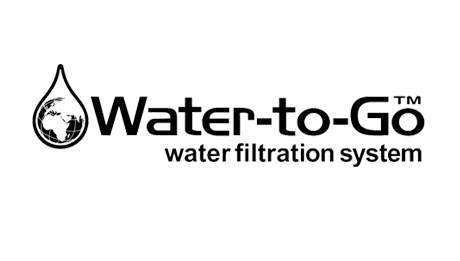
Following on from last months blog “how much water is needed to survive” we will be having a look at water acquisition within a coastal environment in this post. Starting at the beginning and looking at procurement of water within a coastal environment……where’s the best place to start looking for potable water?
Rain water – The purest source of water, Rain water can be collected using any form of sheet material fashioned into a “well” and is the only method where you don’t have to worry about the 3 principles of water purification which are;
- Sedimentation – Allowing turbidity/particles to settle to the bottom of a container
- Filtration – Taking out any large particles that could host harmful pathogens within….It should be noted that Chlorine, Iodine and other chemicals “bind” to organic particles and might not necessarily reach the centre of particles to denature pathogens
- Purification/pasteurisation – Once the water is clear of particles using heat or chemicals to render pathogen inert. The boiling process is the most reliable as long as you have carried out steps 1 and 2 above.
All organic pathogens are denatured at “time over 72 degrees centigrade”, however bringing water to the boil is a good visual sign that you have achieved this. Don’t worry about boiling the water for a certain length of time just remember….Big bubbles No troubles
Streams – Water should be taken from swift flowing water where possible (bacteria and protozoa do not thrive well in highly oxygenated water. When using water courses always take water from as high up as possible, this will reduce the amount of tributaries flowing into the main source. Contrary to popular belief water taken from streams should always be purified (sedimentation and filtration is not needed when the water is running quickly)
Seep Wells – Simple but effective, look for indicator signs of saturated ground – Sphagnum moss, reed/rushes and surface water. Dig down into the ground until you hit the water table and allow the water table to rise within the well. The water coming through at first will be full of turbidity so bail the well out two or three times until it starts to run clear and follow the 3 principles outlined above.
Within a coastal environment digging a seep well directly into the sand or even up on the banks will result in “brackish” water coming through. A top tip when using this method near the sea is to dig the well directly behind the first sand dune, this will yield potable water.
NOTE –The water is not reliably safe to drink straight from the well.
Solar stills and transpiration bags – Both these techniques rely on evaporation at a slow rate. A well made solar still or transpiration bag left out in direct sunlight will yield around 300ml a day (1 cup)…..if you’re lucky. It should be noted that using salt water in a solar still will still result in Brackish water.
Fresh water from sea water
We are all familiar with the dangers of drinking sea water, but what actually happens when salt water is ingested?
- The concentration of salt within the humans body is regulated by a process called Osmosis
- Osmosis is the movement of high water concentration to low water concentration across a cell wall.
- Cells hold a high water content within them, but a Low salt concentration
- When the salt water which has a low water content but high salt concentration is drunk (sea water) this draws water, across the cells wall, and into the cell as an equilibrium is reached
- too much salt in the system and the cells shrink and dehydration will occur at a higher rate, putting strain on the Renal system and other organs ultimately resulting in death.
- The same thing happens were you to drink your own urine.
Where you to find yourself in a situation where there is no reliable source of fresh water you will have to think about converting salt water into drinking water, which is no mean feat. Out of all the methods that have been tried and tested by the BCS team the best result we have found is with an improvised Distillation unit.

Improvised Distillation Unit
The one thing you’ll never be without on the shore line is resources. Flotsam and jetsam is abundant and even the most inconspicuous item can be utilised in many different ways. The improvised distillation unit pictured comprises of a scavenged metal tin, a camelback drinking staw (already part of our kit) and a metal receptacle for fresh water.
- The Black metal tin contained 2 litres of salt water collected from the sea.
- the camel back straw was fixed to the top of the container and buried under wet sand
- The other end of the straw is placed into the fresh water receptacle.
- Light a fire at the bottom of the metal container holding the seawater and attempt to hold a constant heat (this is the hardest part of the technique)
- As the sea water begins to boil, fresh water steam begins to collect in the camel back straw, due to it being buried under wet sand the steam condenses in the straw and runs down into the fresh water container.
Result
Over a 1 hour distillation time, from the 2 litres of sea water, fresh water harvested was 100ml giving a ratio of 20:1. Although this does not seem a huge amount if you were to multiply this by 24 hours the total yield would be almost 2.5 litres which is significant.

Reverse Osmosis Pump
Reverse Osmosis Pump (ROP)
Reverse osmosis pumps can typically be found on life rafts and other vessels where crew members may find themselves adrift and unable to be resupplied for a length of time. The Survival ROP’s are reasonably small but due to the mechanisms are heavy.
As was discussed earlier, naturally the process of osmosis allows salts to pass from a high concentration to a low concentration across a membrane to achieve an equilibrium. The ROP, as the name suggests works the opposite way round, so to produce fresh water it holds the salt water in a chamber and pressure (produced by pumping) forces the salt across the membrane from a . An “inlet” pipe is passed into salt water and the handle is pumped at 40 strokes per minute, the pressure reached within the chamber pushes low.
Keep up to date with our blog for more offers on our Bushcraft and Survival Courses in Scotland and North East England – We feature discounts and competitions regularly.












 Message an Instructor now
Message an Instructor now